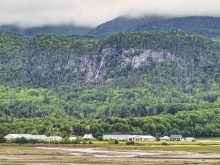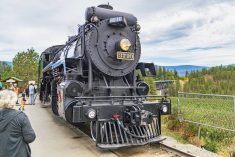If you’re reading this while sipping your morning coffee, chances are that the coffee beans came from a farm like the one run by Nicolas Spath.
We recently visited the heart of Colombia’s famous coffee region where Spath showed us around his small farm with 2,000 coffee trees.
We were in the town of Filandia, surrounded by coffee farms and known for its wildly colourful buildings. Wanting a closer look at coffee production, we arranged for a tour of a nearby farm.
Spath picked us up in his 1954 Willys Jeep. Old Jeeps from the 1940s and 1950s are a common sight. Years ago they replaced mules as the work-horses of coffee country. They can haul heavy loads, such as several bags of coffee, and are suited to the mountainous terrain.
The farm is about 10 kilometres from town, down a narrow gravel road with non-stop views over brilliant green hills and valleys. Our biggest surprise in the coffee region was the size of farms. Colombian coffee is so well known that we imagined huge plantations would be cranking out beans to meet demand. Instead, the vast majority of the more than 500,000 coffee growers are small family farms, averaging less than 12 acres.
Colombia’s terrain is not suited for large-scale mechanized production. Coffee grows high in the mountains with scant level land, requiring almost everything to be done by hand. Yet these mountain slopes have the ideal mix of soil, climate, and rainfall that coffee trees prefer. Here the strategy is to concentrate on quality rather than quantity, which has worked judging by the number of brands boasting 100 percent Colombian coffee.
Spath’s steeply sloping land has two sections: older, larger trees planted five years ago, and newer plants in the upper section.
“It takes about 22 months for a new coffee tree to start bearing fruit,” he said. “First little flowers emerge on the stem and stay open for about three days. After that, berries start to develop.”
When trees become too high to reach from the ground, they’re cut down to start growing again.
Spath manages the operation by himself, with occasional help from a hired worker. Difficulty in finding labour and fluctuating coffee prices have caused many small producers to abandon coffee farming.

While the main harvest seasons come twice per year, coffee beans are always ripening. Nicolas picks every 20 days. Even if a tree has only a few ripe beans, they still have to be picked. Overripe ones fall on the ground where worms immediately infect them.
Spath took us through the entire operation, from shaded nursery areas where he starts new trees, to the shed where he puts beans through a hulling machine to remove the outer shell, and the drying area.
We tied baskets around our waists to get a taste for hand-harvesting beans. Judging by the meager selection of red beans in our baskets, it’s doubtful we would make it as professional coffee pickers, especially since they get paid by the kilogram, not by the hour.
Most producers take their dried beans to a buyer or to a co-operative, where they are eventually sold on the world market. Spath takes part of his production to a commercial roaster in a nearby town, then packages the beans to sell direct to consumers.

Spath wanted to treat us to a cup of coffee that was even fresher. Taking beans that had been drying for a couple weeks, he put them into a pot fitted with a crank to keep the beans moving so as not to burn, and put it over low heat on the stove. It took about 20 minutes of slow handle-turning to achieve a medium roast.
He then took the roasted beans outside and poured them from one container to another while using a small electric fan to blow away the lighter chaff produced while roasting. Then it was back to the kitchen to grind the beans and brew the coffee. Settling into chairs on the front veranda with a million dollar view, we enjoyed the freshest, finest tasting coffee we have ever had.
Read Also

Accurate accounting, inventory records are important
Maintaining detailed accounting and inventory records is not just a best practice; it’s a critical component of financial health, operational efficiency and compliance with programs like AgriStability.
Arlene and Robin Karpan are well-travelled writers based in Saskatoon. Contact: travel@producer.com.

















